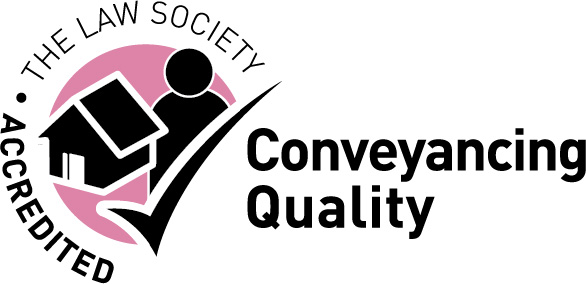IR35 - Do you need to be worried?
30 August 2019
Background
IR35 was introduced in 2000. It was designed to reduce tax avoidance by contractors who HMRC believed to be “disguised employees”, that is to say people who are off-payroll but who work in a similar way to full-time employees and bill for their services via their PSC to make their business as tax efficient as possible. The IRA35 rules were designed to ensure that contractors working via a PSC and deemed to be doing the same work of an employee pay broadly the same tax.
Employers have seen off-payroll contractors as a useful way to avoid the pitfalls of employment legislation, for example, when a project ends and people have to be laid off they do not need to worry about redundancy procedures, or as a means of avoiding obligations relating to statutory sick pay or holiday pay. There is also the advantage to employers of reducing their wage bill because they do not have to pay employers NICs. For their part contractors have been willing to give up key employment rights because of the flexibility such arrangements present. They can also well reduce their tax bill on account of their PSC paying them a nominal salary and making up their income by dividend payments which attract a lower rate of tax.
Any individual ‘inside’ IR35 deemed to be operating like an employee, rather than a contractor, must pay tax and NICs. If the individual is genuinely providing business to business services, they are able to operate ‘outside’ IR35. It is common for many contractors to self-declare themselves as being outside of IR35. Currently if they get it wrong the responsibility for payment of unpaid income tax and NICs is theirs and that of their business.
What’s new?
The changes which were announced in the 2018 Autumn Budget follow the framework introduced in 2017 to IR35 arrangements which applied to the public sector only. The forthcoming changes further target perceived tax avoidance by off-payroll workers by the introduction of new IR35 assessment rules which mean that rather than a contractor deciding their own IR35 status, the end client must assess whether an assignment is ‘inside’ or ‘outside’ of IR35.
From April 2020 getting it wrong is no longer the responsibility of the consultant and their business alone. Getting it wrong could result in an entity finding that it is responsible for unpaid tax and NIC payments which it should have deducted from payments made. A good example of what the consequences might be is the tax case of the former BBC presenter Christa Ackroyd who lost her appeal relating to unpaid taxes for the tax year 2006/2007 to 2012/13. Ms Ackroyd and was found to owe income tax and NICs amounting to £419,151. As this case concerned tax years which pre-dated the changes to IR35 legislation that applied to the public sector, the BBC was not liable for the unpaid taxes. The position would have been different under the new regime.
In the Ackroyd case it was found that the nature of Ms Ackroyd’s engagement with the BBC was in reality more similar to that of an employment relationship – as opposed to a genuine business to business consultancy relationship. Some of the factors significant to the decision were that:
-
Ms Ackroyd was not able to provide a substitute;
-
Ms Ackroyd admitted that the BBC had the right to specify what services her business would supply;
-
The BBC ultimately had control over the content of the work produced;
-
Ms Ackroyd was not allowed to provide services for other clients; and
-
There was mutual obligation between the parties – Ms Ackroyd contractually had to provide specific services, and the BBC contractually had to pay a monthly fee for such services.
As the forthcoming legislation puts the onus on the end user to declare whether an assignment is inside or outside the scope of IR35 which will include telling an agency who supplies the contractor, HMRC has produced an online tool ‘Check employment status for tax’ (CEST). CEST is a questionnaire that lists factors such as the first four of the above designed to assist with the process of identification. As with all online applications they do not take into account nuances or the reality of a situation and the test has been widely criticised for giving an ‘employed’ result in the vast majority of situations (despite tax tribunal rulings on identical facts to the contrary). Caution also needs to be adopted with the results because HMRC say they will ‘stand by the result given unless a compliance check finds the information provided is not accurate.’
But it’s all about tax isn’t it?
It’s not all about tax. The changes could result in increased costs. For example, the initial reaction from workers within the public sector, who were assessed as being inside of IR35, was to ask for an increase in their daily or hourly rate to compensate for the reductions to their earnings on account of their tax and NIC contributions being deducted at source. Any increased tax and NIC costs that have to be borne by an intermediary such as an agency are also likely to result in increased fees being charged to the end user. Statistics show that 28% of public sector bodies had to increase day rates. Some public bodies, including HMRC, NHS and the MOD have ceased using any PSC contractors rather than risk fines if they get their status wrong. It is highly likely that a similar scenario will unfold within the private sector when the new changes take effect.
What should employers do?
-
It is critical that you audit your workforce (which includes those engaged through agencies and other intermediaries) to identify those who are supplying their services through PSCs.
-
Determine if the off-payroll rules apply for any contracts that will extend beyond April 2020.
-
Start talking to your contractors and agencies who supply contractors to you about whether the off-payroll rules apply and what, if any, changes need to be made to ensure the relationship is crystal clear.
-
Put processes in place to determine if the off-payroll rules apply to future engagements. These might include who in the organisation should make a determination and how payments will be made to contractors who fall within the off-payroll rules.
Obtaining legal or other expert advice will help ensure compliance with the new legislation particularly given the wider implications arising from the changes and the reality of each arrangement, as well as possible changes to contracts concerning contractors. Such advice should also assist in knowing what needs to be done to reduce the impact/risks posed by the changes.
What should contractors do?
-
To find out if you are ‘inside’ or ‘outside’ IR35, take the CEST test to assist in assessing your current work practices. Some of the factors HMRC will take into consideration when running an CEST are:
-
how you are paid. Is it project by project and the relationship comes to an end when a specific milestone is reached?
-
running a business of your own accord. For example, having a website and your own dedicated office space.
-
supplying your own equipment.
-
not being a report line for employees of the business to whom you are providing services.
-
-
Audit your current working practices based on the results of the CEST.
-
Think about how IR35 changes could affect how you do business and what you can do to help solve potential problems before they arise.
Before making any changes as to how you conduct business, consider whether you need to obtain advice from legal experts to make sure any changes you want to make will still be compliant with the contract you have with the end user, with IR35 and other laws and regulations.



